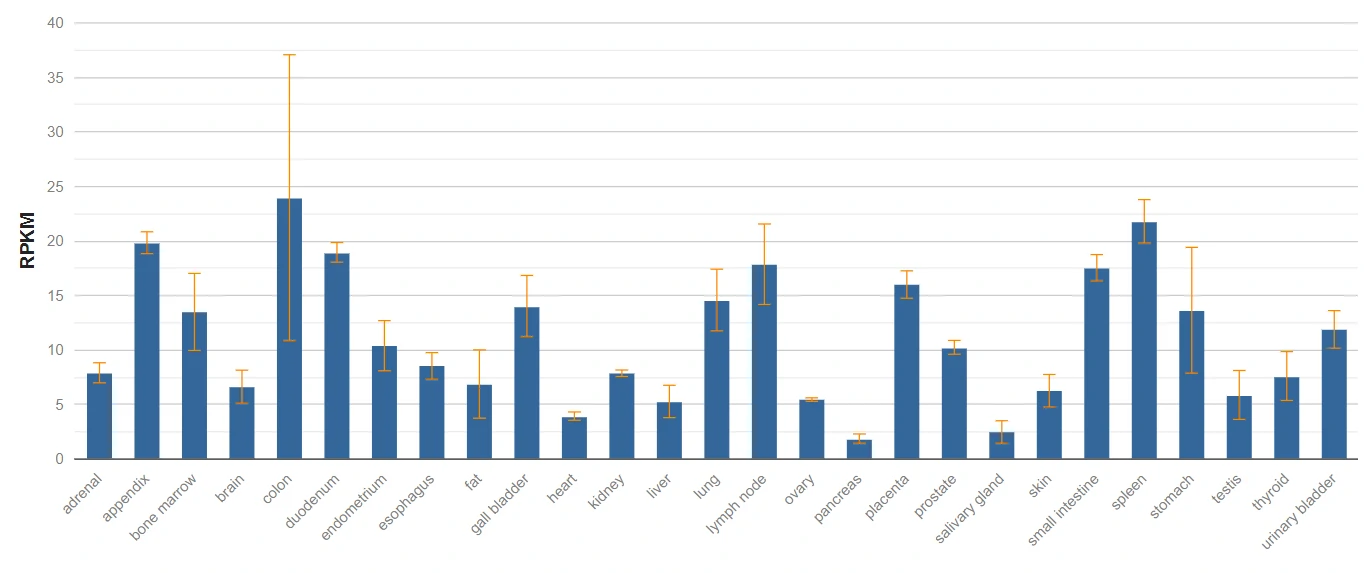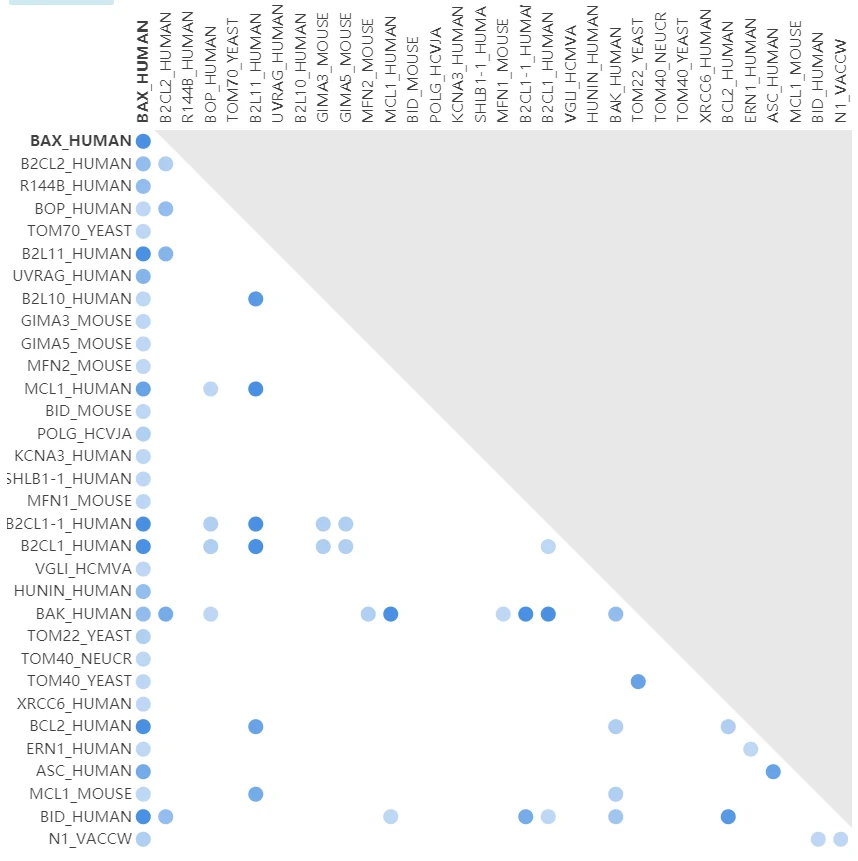BAX Gene (BCL2 Associated X, Apoptosis Regulator)
Summary of BAX Gene
|
|
BAX provided by HGNC |
|
|
BCL2 associated X, apoptosis regulator provided by HGNC |
|
| HGNC:HGNC:959 |
|
| Ensembl:ENSG00000087088 MIM:600040 |
|
| protein coding |
|
| REVIEWED |
|
| Homo sapiens |
|
| Eukaryota; Metazoa; Chordata; Craniata; Vertebrata; Euteleostomi; Mammalia; Eutheria; Euarchontoglires; Primates; Haplorrhini; Catarrhini; Hominidae; Homo |
|
| BCL2L4 |
|
| The protein encoded by this gene belongs to the BCL2 protein family. BCL2 family members form hetero- or homodimers and act as anti- or pro-apoptotic regulators that are involved in a wide variety of cellular activities. This protein forms a heterodimer with BCL2, and functions as an apoptotic activator. This protein is reported to interact with, and increase the opening of, the mitochondrial voltage-dependent anion channel (VDAC), which leads to the loss in membrane potential and the release of cytochrome c. The expression of this gene is regulated by the tumor suppressor P53 and has been shown to be involved in P53-mediated apoptosis. Multiple alternatively spliced transcript variants, which encode different isoforms, have been reported for this gene. [provided by RefSeq, Jul 2008] |
|
| Ubiquitous expression in colon (RPKM 24.0), spleen (RPKM 21.8) and 25 other tissues See more |
|
| mouse |
| Product Name | Contents | Price(In USD) | Qty (Quantity) | Sum(In USD) |
|---|---|---|---|---|
| Human BAX Adenovirus plasmid (BC014175) |
Species: human Product Type: Adenovirus plasmid (overexpression) Fluorescent Label: GFP Fusion Tag: 3xflag Promoter: CMV Resistance: Amplicin size: 5ug |
777 | ||
| Mouse Bax Lentivirus plasmid (NM_007527) |
Species: mouse Product Type: Lentivirus plasmid (overexpression) Fluorescent Label: GFP+PURO Fusion Tag: 3xflag Promoter: CMV Resistance: Amplicin size: 5ug |
777 | ||
| Optional Choice | Plasmid Validation(qPCR) | 500 | ||
| Optional Choice | Plasmid Validation(Western Blot) | 500 | ||
| Shipping Cost: | 169.00 | |||
| Total: | ||||
Function of BAX Gene
Plays a role in the mitochondrial apoptotic process. Under normal conditions, BAX is largely cytosolic via constant retrotranslocation from mitochondria to the cytosol mediated by BCL2L1/Bcl-xL, which avoids accumulation of toxic BAX levels at the mitochondrial outer membrane (MOM) (PubMed:21458670). Under stress conditions, undergoes a conformation change that causes translocation to the mitochondrion membrane, leading to the release of cytochrome c that then triggers apoptosis. Promotes activation of CASP3, and thereby apoptosis.
Expression of BAX Gene

Interaction of BAX Gene
Interacts with BCL2L11. Interaction with BCL2L11 promotes BAX oligomerization and association with mitochondrial membranes, with subsequent release of cytochrome c. Forms heterodimers with BCL2, BCL2L1 isoform Bcl-X(L), BCL2L2, MCL1 and A1.
Interacts with SH3GLB1 and HN.
Interacts with SFN and YWHAZ; the interaction occurs in the cytoplasm. Under stress conditions, JNK-mediated phosphorylation of SFN and YWHAZ, releases BAX to mitochondria. Isoform Sigma interacts with BCL2A1 and BCL2L1 isoform Bcl-X(L).
Interacts with RNF144B, which regulates the ubiquitin-dependent stability of BAX.
Interacts with CLU under stress conditions that cause a conformation change leading to BAX oligomerization and association with mitochondria. Does not interact with CLU in unstressed cells.
Interacts with FAIM2/LFG2.
Interacts with RTL10/BOP.
Interacts (via a C-terminal 33 residues) with NOL3 (via CARD domain); inhibits BAX activation and translocation and consequently cytochrome c release from mitochondria.
Interacts with GIMAP3/IAN4 and GIMAP5/IAN5; this interaction is increased, when cells initiate apoptosis upon IL2 withdrawal (PubMed:16509771).
(Microbial infection) Interacts with adenovirus E1B 19K protein; this interaction blocks BAX oligomerization (PubMed:11462023).
(Microbial infection) Interacts with human cytomegalovirus/HHV-5 protein vMIA/UL37.
(Microbial infection) Interacts with enterovirus protein 2B; this interaction activates BAX-induced apoptosis.


<







